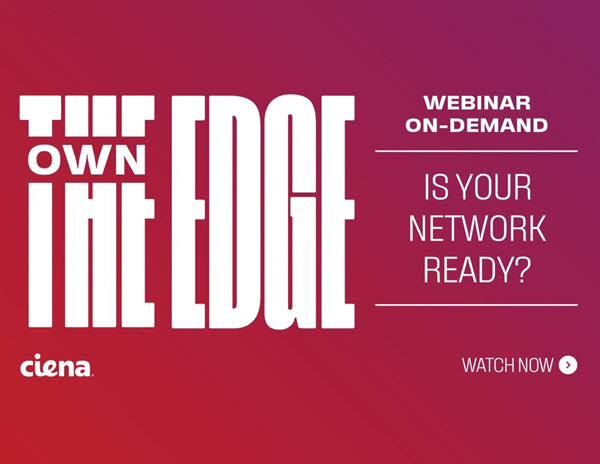Things to consider when you want to ‘Own the Edge’
With the rise of 5G and increased attention on the network edge, we're seeing communications service providers (CSPs) globally making changes and upgrades to their networks and systems to continue delivering the connectivity their customers require.
Over the past few weeks, Dimitris Mavrakis of ABI Research has provided us – through blog posts and webinars – with his take on the shifting telecom landscape and what CSPs might do to stay ahead of the curve. Here are some takeaways that integrate his thoughts on universal automation, understanding the importance of “the edge”, and xHaul networks in relation to 5G.
Automation wherever possible
Both 5G and edge cloud computing require new levels of service granularity, which requires independent management of each user group and enterprise vertical. Because many processes must be completed quickly and reliably, granular services cannot be done manually and require automation for greater efficiency.
Cloud service providers will have to automate more processes to ensure that consumer and enterprise-level customers have the necessary connectivity. Because of this, future network functions will be designed, rolled out, and managed in an automated manner with minimal human intervention.
Although this will be challenging at first, CSPs that make the upgrade and shift will find that they will operate more efficiently and economically.
When it comes to the network edge and the attendant extreme distribution of processing capabilities, CSPs will find themselves needing to manage many more nodes than they do now. In such an environment, providers must utilize centralized orchestration and automation since it will be impossible to control and maintain them all manually.
It's important to plan ahead
CSPs face pressure from all sides as customer demands and industry competition increase. As networks become more complex, CSPs must take a proactive approach to plan out their infrastructure expansions and future strategies rather than making changes only when the need arises.
In the realm of 5G, this means working out backhaul, fronthaul, and midhaul networks – including carrier ethernet, CPRI, and eCPRI – along with the ability to support new functional splits, distributed network components, and several fronthaul options. Cloud service providers are also planning network slicing, distributed-service chaining, and edge-computing services to address the needs of enterprise customers. These services will require cutting-edge, last-mile network deployments, strong cloud capabilities, and consistent orchestration.
 When it comes to the network edge and the attendant extreme distribution of processing capabilities, CSPs will find themselves needing to manage many more nodes than they do now. In such an environment, providers must utilize centralized orchestration and automation since it will be impossible to control and maintain them all manually. To make sure they can meet the needs and challenges of the edge cloud, CSPs must strategize and take care when upgrading their infrastructure to support the applications and payloads that customers will require now and in the future.
When it comes to the network edge and the attendant extreme distribution of processing capabilities, CSPs will find themselves needing to manage many more nodes than they do now. In such an environment, providers must utilize centralized orchestration and automation since it will be impossible to control and maintain them all manually. To make sure they can meet the needs and challenges of the edge cloud, CSPs must strategize and take care when upgrading their infrastructure to support the applications and payloads that customers will require now and in the future.
But you must also stay flexible
Future network configurations will be more dynamic than what we have today. Transport networks must be both robust and flexible to handle varying demand shifts. As a result, cloud service providers will need to overhaul their systems since many networks currently feature a patchwork of new technologies and legacy equipment from a wide range of vendors. This patchwork approach can have high operational costs, and the resulting systems are complex and inefficient to manage and upgrade. Cloud service providers must shift to adaptable platforms which can support their existing networks and accommodate their future needs.
Universal aggregation (UA) will become more critical in this regard because all aspects of telecom networks must become platforms that can be automated, reused, and centrally orchestrated to maintain profitability and openness. Cloud service providers can rapidly create new service types by combining traffic from multiple networks onto a single, centrally orchestrated-and-automated transport platform
Many in the industry view UA as a paradigm shift occurring across multiple networks. This paradigm shift will accelerate as CSPs seek to maintain profitability and openness for customers while also delivering advanced services – such as network slicing and service chaining – and building the foundations for future network technologies.









